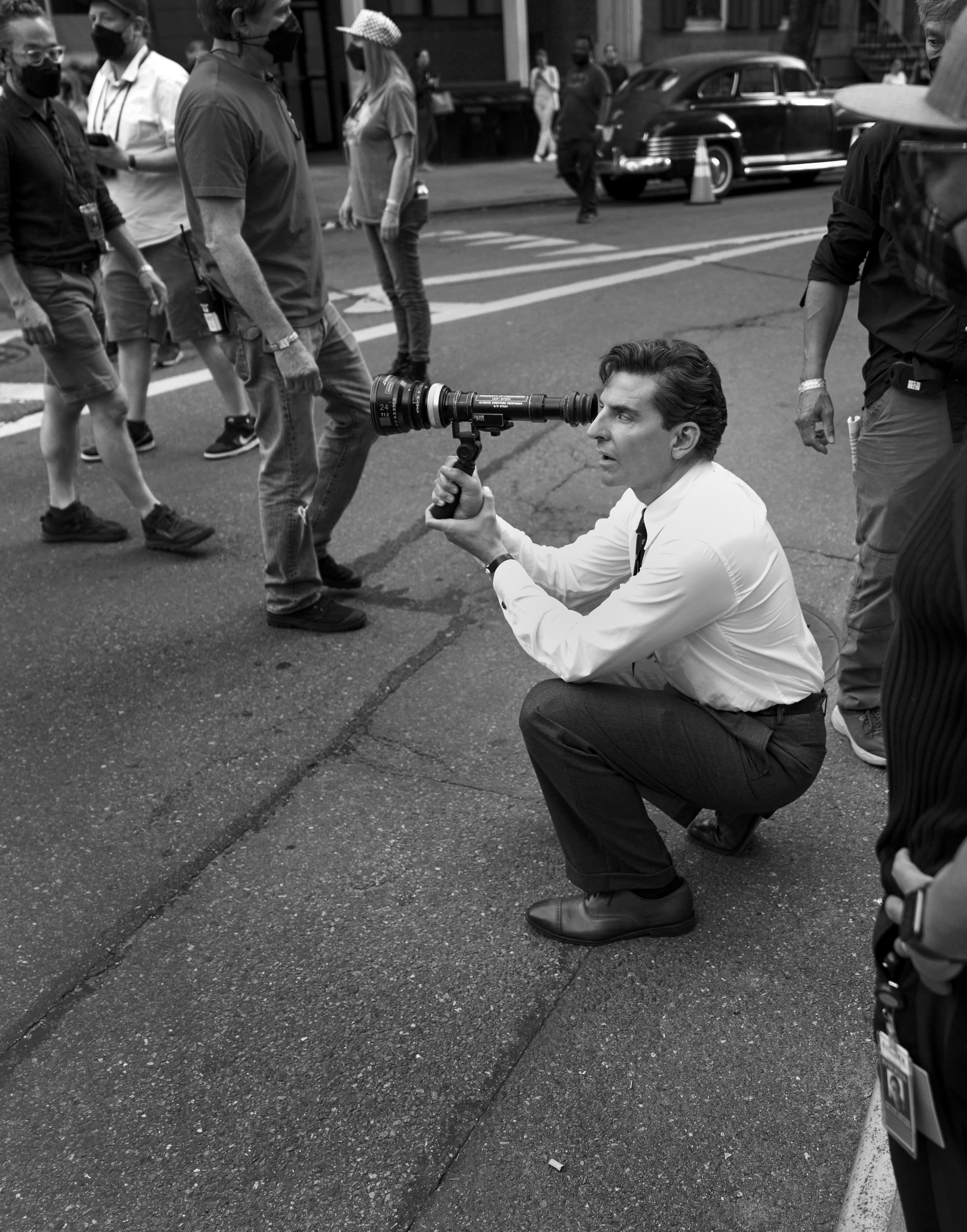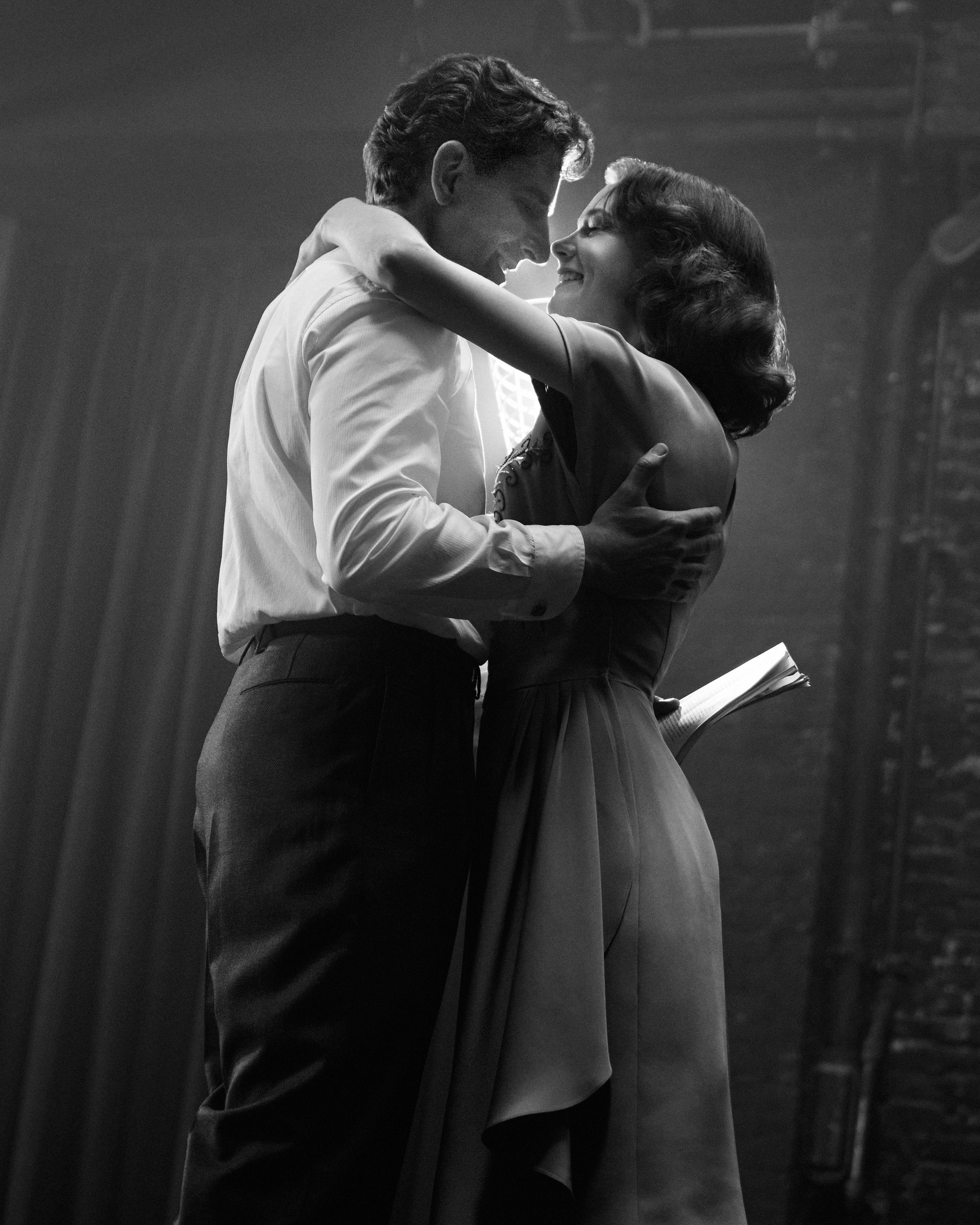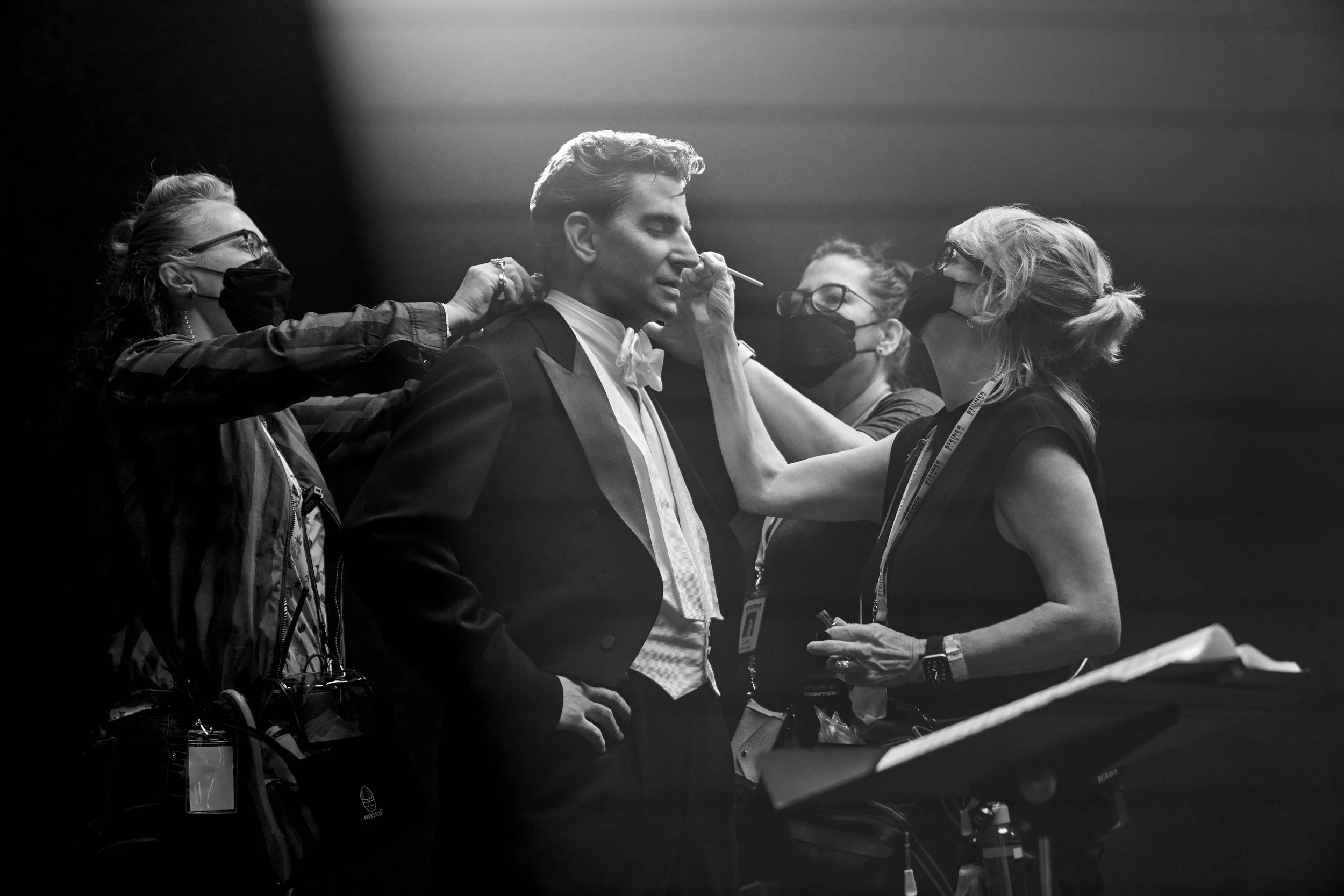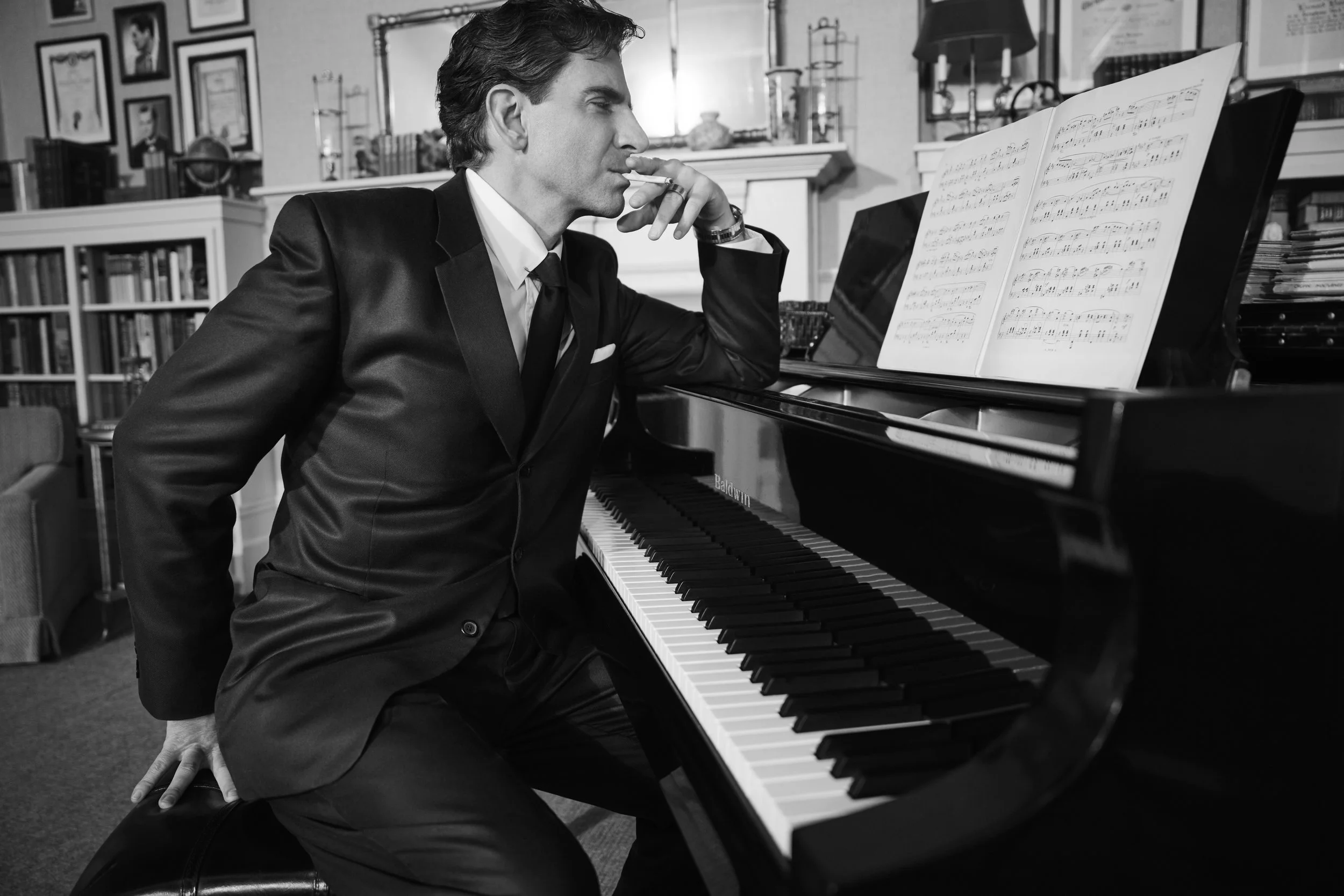MARK BRIDGES TALKS MAKING COSTUMES FOR MAESTRO

Meet Mark Bridges, an Oscar Winning Costume Designer whose recent work can be seen in the movie Maestro, starring and directed by Bradley Cooper out now on Netflix. Maestro is an American biographical romantic drama film that centres on the relationship between American composer Leonard Bernstein and his wife Felicia Montealegre. Mark sat down for an interview with Peter Brooker for the From Tailors With Love podcast to talk about his process and some key looks in the film.
Can you remember how you got involved with Maestro?
MB: Bradley and I were working on Licorice Pizza at the time that he started doing camera tests for Maestro. We'd also worked together on Silver Linings Playbook. So there was a trust there as far as designer and actor. During filming on Licorice Pizza he said hey, can you jump on and maybe helped me get some looks for Lenny (Leonard Bernstein) while we go through his life with the makeup tests. I subsequently tested Carey (Carey Mulligan) with him, I did some clothes for her too. So I just never left the project.
As a costume designer, are you always there during filming?
MB: Everyone does it differently. I trained in such a way that I'm there to establish the looks when we first see them on camera and get them on camera. I also love to watch the monitor and see how the clothes are going to play. I want to see it in its dramatic moment on set. So yeah, I always escort my creations to the set. And stick around until you know we've got a half a dozen takes there. I make sure my director is happy. Whether it's Steven or Bradley, you know, just make sure everything's cool with them. I'm there for them to change it and make sure we're all happy. Nobody else's job. Just mine and I love it. I love being on set, actually. But then once I see that we're good, I go off and work on the afternoons costume or next week's costume. We're always working ahead.
Did working on The Artist give you a head start in into this realm of doing black and white and knowing which fabrics are going to come through on the screen?
MB: I brought some of that knowledge from The Artist to this project. We committed to black and white film on this Maestro, whereas there was some digital saturation on The Artist. So we did tests. I think the basic idea that textures work better, read better. You see all the textures, Bradley's jacket, the print on his neck tie, you read the houndstooth, there's a lot of texture there. In black and white, you find that there are middle values that all look very different in colour, but when you turn them black and white, they all look exactly the same. So you rely on contrast and texture and you're so involved in the black and white, I think, because you can almost feel it.
I was noticing that Bradley was wearing white t shirts with darker coloured field jackets over them. This would make you pull focus to the principal actors.
MB: Yeah. And you have to balance it with he and Carey. There's a scene where they do the interview in their apartment. Bradley is very much light and dark. So your eye goes there. But then she's also one solid, piece of pale. They're very balanced as far as where your eye goes. They sit well in the frame together. You're constantly trying to imagine character, and style and textures. But then you're also, this is why I go to set because I love to see how that turned out. Because so many things you're just imagining and using very calculated risks on making things and you bring it to set thinking that it's going to work. But I like to make sure.
There is a pivot point, when it does switch to colour. Bradley's wearing a Prince of Wales Gray with like a pink over check. Were you conscious that this had to be a quite a statement piece as this is the moment where we are going to switch?
MB: It was a look that in research, I see Lenny wearing this. I thought this is a perfect place to put it. There were several different places in the film that we might go from black and white to colour. And it worked out quite well. But a lot of people have said they were so into the movie, they didn't realize it went to colour, which is a big compliment too. But I love that particular suit for Leonard and then he has sort of a coordinated neck tie and pockets where and he even mentions that Felicia dressed him because he would be a wreck if she didn't.
Are you kind of trying to be as faithful and religious to Leonard's style as possible or do you get to have a bit of artistic license with it as well?
MB: See, I felt like that the Lennie research were guideposts for me. Then you pick and choose what is going to reflect the character at that moment. The best tell a story of the passage of time, like the tan suit with the pink shirt. The details on that I love so much. Hopefully you get it by that change in menswear style, the slim hip, the bellows pockets and the half belt in the back and pink shirt etc. I think that's how we try to move through the story with those menswear details.
And we need to have it looking a little bit cool right?
MB: I think so. When I start my research, I go out and I try to put my hands on as many real garments as I can. Because you see, you'll get an idea for a fabric or you'll get an idea for a lapel with or the shape of the trousers or like that tan suit. I'm looking for all those details. That's what I think is cool and real. You become kind of an archivist a little bit, nothing's new that except what's been forgotten. And so I'm looking for all those forgotten details that then turn around and look cool and interesting.
There was one moment of cool that I thought stood out above all other moments of cool. Bradley had this striped jumpsuit look like what McQueen would wear in Le Mans. Were you thinking about that film for inspiration?
MB: This is interesting, because this is how things sort of evolved. Jamie Bernstein did a book called Famous Father Girl. And in that book is very small photo of Lenny and Tommy, during the period when Lenny left the family to live with Tommy. And he's wearing a white jumpsuit. It's such a moment in time. It's the kind of thing that would be in the back of a GQ magazine. Then I think Bradley suggested stripes. Okay. And I thought, Oh, that's okay. That's cool. And, you know, whether it came from LeMans [...] he (Bradley) didn't have much to say throughout the production. I mean, as long as it fit him, and he was very supportive of my choices and things. So, when he does finally say something, contributing to the costumes, I'm like, sounds great. Let's do it.
Currently or are there any other looks in the film that you can actually buy right now?
MB: Most of the roll neck sweaters we bought on Madison Avenue. Yeah, we do try to buy things, the shoes were brand new. The knitwear usually is better for new but we had most of his things made including neckties. Just so they all looked pristine and right.
Maestro is on Netflix. People can follow Mark on Instagram.
Founder of this eponymous blog, focusing on men's fashion & lifestyle.









